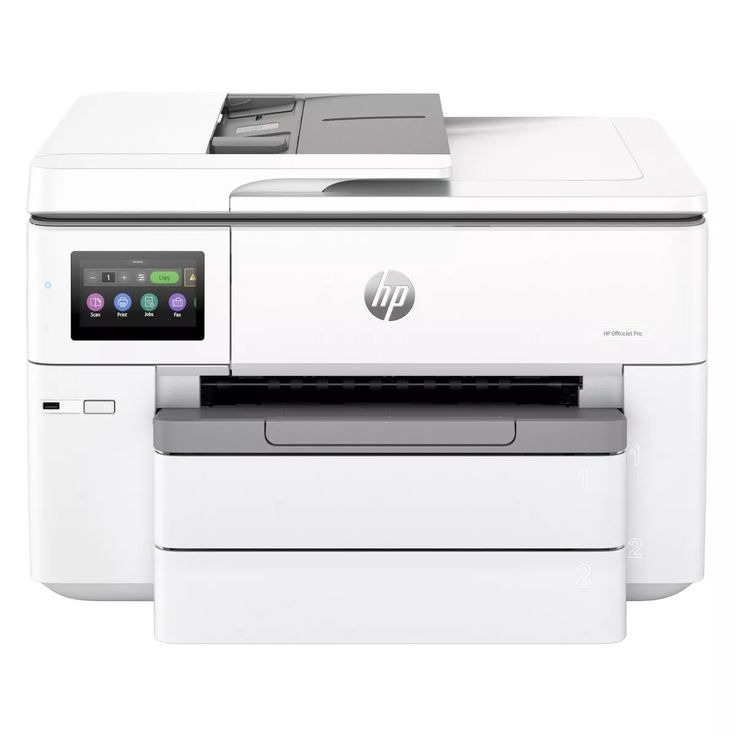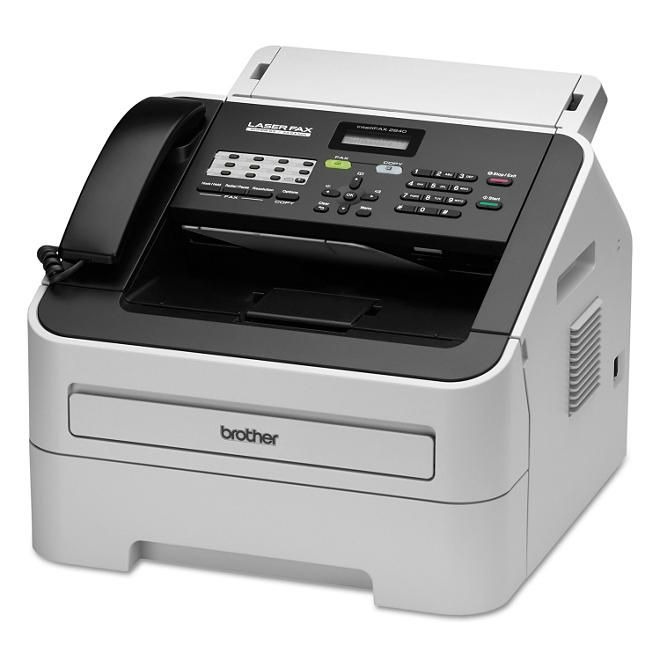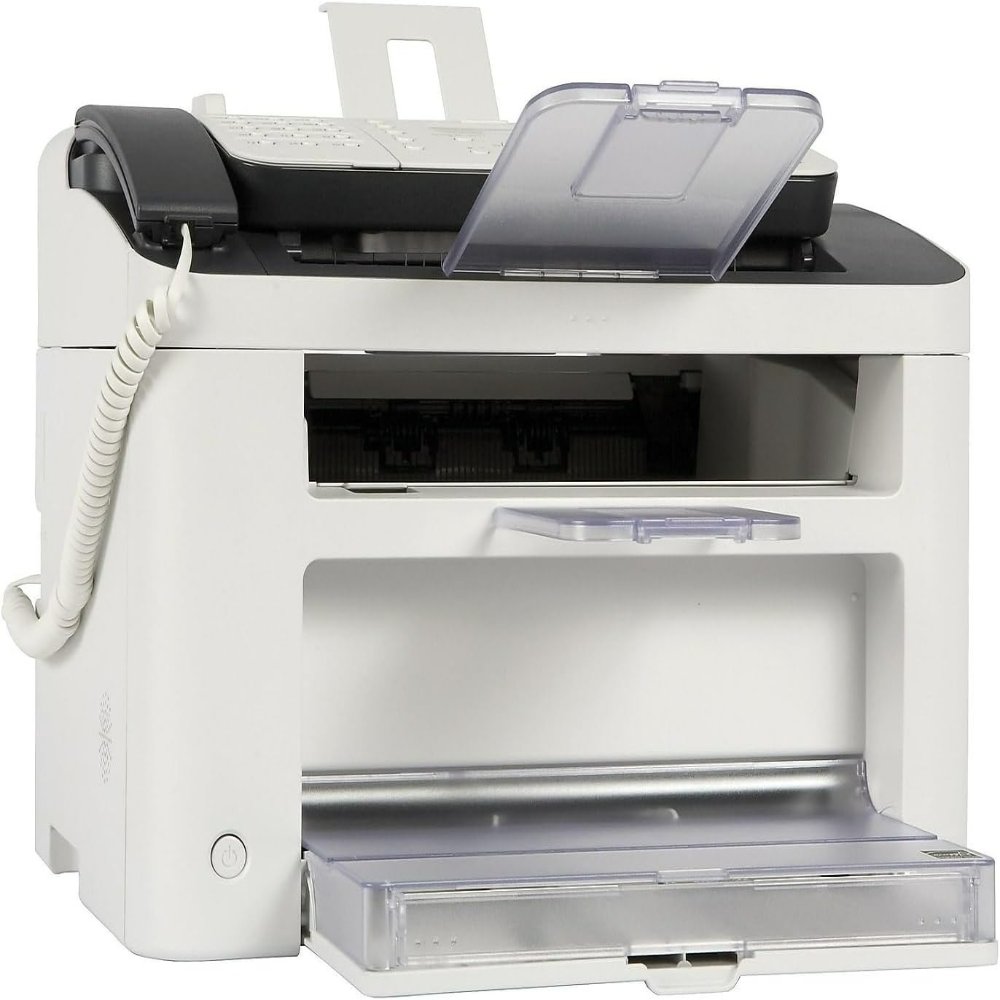What is a Fax Machine?
A fax machine is a device that sends and receives documents over a phone line. It scans a document, converts the information into a signal, and then transmits it through the phone network to another fax machine. The receiving machine decodes the signal and prints a copy of the original document.
When thinking about how to use a fax machine, it’s important to recognize its role in business and personal communication. Despite being a technology that peaked in popularity in the late 20th century, it remains in use today for legal, medical, and governmental documents. Its continued use is due to the secure transmission of sensitive information it offers, which is less vulnerable to hacking compared to some modern methods of electronic communication.
Fax machines are known for their reliability and straightforward operation. They can send documents to any part of the world as long as the recipient has a compatible machine and a working phone line. This makes fax machines incredibly useful for international communication where internet-based methods may be less reliable.
Understanding how to use a fax machine effectively involves knowing about its features and functions, which we will explore later in this guide. For now, it’s crucial to grasp the basic idea: a fax machine digitizes documents, sends them through phone networks, and ensures a physical copy can be produced at the other end. This simple yet powerful capability has cemented the fax machine’s place in various industries.

Preparing to Send a Fax
Before you send a fax, there are some key steps to ensure a smooth process. Here’s a quick rundown to get you ready:
Gather the Documents
Start by collecting all the documents you want to fax. Make sure they are clear and readable. If they’re double-sided, decide if both sides need sending.
Check the Number
Verify the recipient’s fax number. A wrong number can lead to a fax sent to the wrong place.
Prepare a Cover Sheet
A cover sheet usually includes your contact information, the recipient’s name, the date, and a brief message. This adds professionalism and helps the recipient know the context of the sent documents.
Load the Paper
Place your documents and cover sheet into the fax machine’s feeder tray. Align the pages neatly to avoid paper jams.
Await Confirmation
After sending, wait for a confirmation that the fax was successful. This can be a printed confirmation or a screen message. Keep this for your records.
By following these steps, you’re now set to send your fax. Each step helps avoid common errors and ensures your information reaches the right hands securely. Always double-check and prepare well when learning how to use a fax machine.

Step-by-Step Guide to Sending a Fax
Sending a fax can seem overwhelming at first. But, once you learn the steps, it’s a straightforward process. Here is a simple guide to follow:
Turn On the Fax Machine
Start by ensuring your fax machine is plugged in and turned on.
Insert the Documents
Place your documents face down in the document feeder. Double-check their order and orientation.
Enter the Recipient’s Fax Number
Using the machine’s keypad, type in the fax number of the recipient. Be careful to enter it correctly.
Set Transmission Speed (if required)
Some machines let you set the speed of transmission. Choose the setting best suited for your document size and urgency.
Press Send or Start
Press the ‘Send’ or ‘Start’ button to begin transmitting your fax. It’s usually a clearly labeled, prominent button.
Wait for Confirmation
Once sent, the machine should produce a confirmation report. This confirms the fax was successfully transmitted. Keep this report for your records.
Follow these steps every time, and troubleshooting will be easier. Proper setup avoids common sending errors and ensures a smooth fax transmission. Remember to use ‘how to use a fax machine’ as your go-to reference for any uncertainties.
Receiving a Fax: What You Need to Know
Being able to send a fax is only one side of the coin; receiving is equally critical. When anticipating the arrival of a fax, there are some easy steps to follow. Here’s a primer on what you need to know when you’re on the receiving end.
Ensure the Fax Machine is On and Connected
Make sure the fax machine is turned on and properly connected to a working phone line. It should be ready to receive at any time.
Check for a Dial Tone
Another step is to verify the presence of a dial tone. This ensures the phone line is active and can accept incoming faxes.
Load Paper into the Machine
Ensure there is enough paper loaded in the machine for the fax to be printed. Running out of paper will prevent a complete reception.
Look for Notification
Once a fax is received, the machine will notify you. This could be through a message on the screen or a sound alert. Be attentive to these notifications.
Retrieve the Received Fax
After the fax arrives, collect the printed document from the output tray. Do this promptly to keep the information secure.
Confirm the Fax Reception
It’s good practice to check if the received fax is complete and clear. If it’s a sensitive document, you might also want to confirm its arrival with the sender.
Following these steps will help ensure that you don’t miss any important documents and that the information remains secure. Always stay prepared and know ‘how to use a fax machine’ for seamless communication.

Troubleshooting Common Fax Machine Issues
Even with simplicity in operation, fax machines can experience issues. Knowing how to troubleshoot common problems can save you time and hassle. Below are the steps to diagnose and solve some frequent hiccups.
Paper Jams
Paper can sometimes get stuck in the machine. To fix it:
- Open the fax machine cover carefully.
- Remove the jammed paper gently.
- Check for any leftover bits of paper.
- Close the cover and try sending the fax again.
Poor Print Quality
If the fax’s print quality is poor, try the following:
- Check if you have enough toner or ink.
- Clean the scanner glass with a soft cloth.
- Verify that the paper type matches what the fax machine supports.
Failed Transmission
Failed faxes can occur. To correct this:
- Double-check the recipient’s fax number.
- Ensure there’s a dial tone and the phone line is working.
- Re-send the fax after waiting a few minutes.
Error Messages
Error messages can give clues to the issue. To clear them:
- Look up the error code in the machine’s manual.
- Follow the suggested steps to resolve the error.
Lack of Confirmation
If you don’t get a confirmation, consider:
- Checking if the fax machine has paper to print the report.
- Making sure the confirmation setting is enabled.
Always refer back to ‘how to use a fax machine’ for guidance. Familiarizing yourself with these troubleshooting steps will ensure you can manage common fax machine issues effectively.
Fax Machine Maintenance Tips
Regular maintenance helps keep your fax machine working smoothly and can extend its life. Here are some easy tips:
Keep it Clean
Dust and dirt can cause issues. Wipe the machine’s exterior with a dry, lint-free cloth. Clean the scanner area gently to avoid poor print quality.
Check the Supplies
Make sure you have spare toner or ink and paper. Running out during an important fax can be frustrating.
Update Regularly
If your machine has software, install updates as they come. This keeps your machine compatible with newer technologies.
Follow Manufacturer’s Guidelines
Each machine has unique needs. Follow the user manual for specific maintenance advice.
Schedule Regular Check-ups
Like any equipment, a fax machine benefits from regular check-ups. Set a reminder to inspect it periodically.
Avoid Overloading
Don’t send too many faxes at once. It can overwork the machine.
Maintaining your fax machine doesn’t have to be a chore. Simple, consistent care can prevent most issues and keep your machine sending and receiving faxes without a hitch. Remember these tips when learning how to use a fax machine for worry-free operation.
Understanding Fax Machine Features and Functions
To effectively use a fax machine, you need to know its features and functions. This knowledge can help you handle documents quickly and with minimal errors. Let’s walk through the core features and functions of most standard fax machines.
Core Fax Machine Features
- Document Feeder: This allows multiple pages to be faxed without manually feeding them.
- Speed Dialing: Store frequently used numbers to save time.
- Transmission Verification Report: Confirms the successful sending of your fax.
- Fax Memory: Stores incoming faxes if the machine runs out of paper.
Additional Fax Machine Functions
- Delayed Sending: Schedule faxes to be sent at a later time.
- Broadcasting: Send the same fax to multiple recipients.
- Polling: Request to receive a fax from another machine.
- Error Correction Mode: Improves transmission quality by correcting errors.
By understanding these features and functions, using a fax machine becomes more efficient. Always refer to your machine’s manual for specific details unique to your model. Remember these tips next time you’re using a fax machine to ensure a smooth and successful faxing experience.
The Future of Fax: Digital Alternatives and Trends
The fax machine has been a steadfast tool for decades, but what does the future hold? Digital and internet-based alternatives are emerging, reshaping how we think about document transmission. As we look to the future, let’s explore the trends and alternatives that are becoming popular.
Digital Alternatives to Traditional Faxing
Email, messaging apps, and document-sharing platforms are becoming standard for many. They allow instant sharing without physical paper. This shift is driven by the need for speed and the convenience of digital accessibility.
Cloud fax services offer another digital alternative, allowing users to send and receive faxes without a physical machine. These services are secure, often encrypted, and can be more reliable than traditional fax machines. They also integrate with email, making it easy to manage faxes alongside other communications.
Trends Influencing Fax Technology
Mobile technology is also influencing fax communication. Fax apps enable users to send faxes directly from smartphones and tablets, streamlining the process even further.
Sustainability concerns are pushing businesses to reduce paper use. As a result, there’s a move towards digital storage and transmission methods to minimize environmental impact.
Cybersecurity is a growing priority. Digital fax solutions are evolving to ensure secure transmission, often offering better protection than traditional methods.
Staying Current with Fax Technology
As these trends show, ‘how to use a fax machine’ may soon include more than just the traditional steps. Staying informed about new technologies ensures that your faxing methods remain efficient and secure. Whether you’re choosing to stick with a classic fax machine or exploring digital options, understanding the direction of fax technology is crucial. It ensures that your communication methods do not become obsolete in an increasingly digital world.